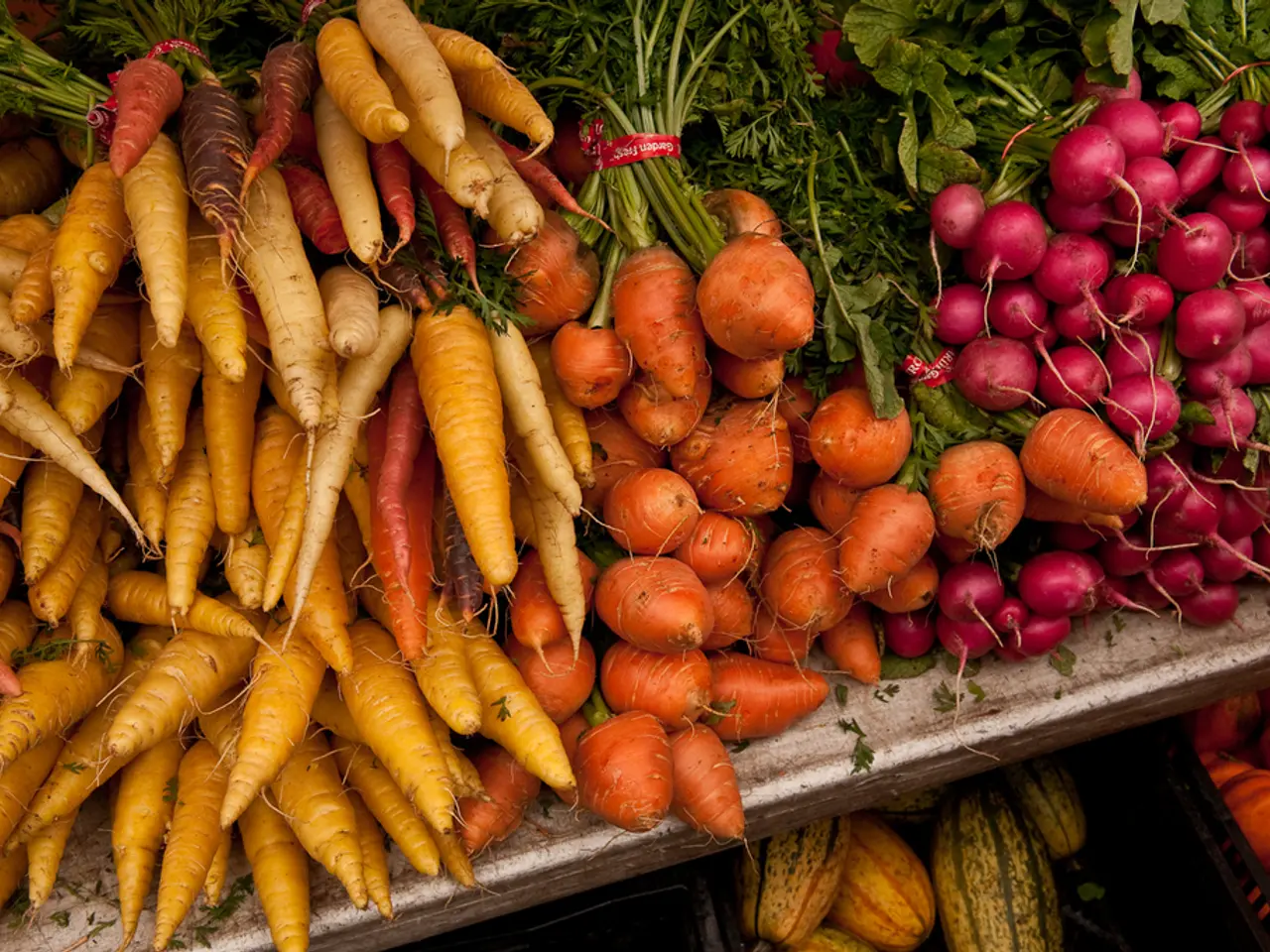Essential Elements of Soil: Breakdown of Key Nutrients for Plants
Calcium (Ca) and Magnesium (Mg) are essential secondary nutrients that play crucial roles in plant growth and development. These two elements, while sharing some similarities, have distinct functions that are vital for a plant's health and vitality.
Calcium: Strengthening Plant Structure and Nutrient Uptake
Calcium primarily strengthens plant structure by being integral to cell wall formation and stability. It enhances overall plant vigor by improving nutrient uptake and fortifying resistance to pests and diseases. Calcium also supports root formation and regulates the uptake of other nutrients. Deficiency symptoms often include stunted new growth, brown spots on leaves, and disorders like blossom end rot in tomatoes due to weakened cell walls and impaired nutrient movement [1][2][3][4].
Beyond its physiological functions, calcium improves soil structure by increasing flocculation and pore space, which enhances root growth and soil aeration [1][5].
Magnesium: Essential for Photosynthesis and Metabolism
Magnesium is essential for photosynthesis because it is the central atom in the chlorophyll molecule. It acts as a co-factor for enzymes involved in protein synthesis, energy transport, and overall metabolism. Magnesium also aids in phosphorus metabolism and regulates nutrient uptake. Deficiency commonly manifests as interveinal chlorosis (yellowing between leaf veins) [1][2][3][4].
Balancing Calcium and Magnesium for Optimal Plant Health
Magnesium deficiencies occur mainly on sandy, acidic soils in high rainfall areas, especially those used for intensive horticulture or dairy farming. Maintaining intracellular Ca²⁺ homeostasis is crucial for generating calcium signals, which are one of the earliest responses in the immune cascade triggered by the perception of non-self molecules by surface-localized pattern-recognition receptors [1].
Calcium plays a key role in root growth and development, acting as a universal signal molecule. It regulates root morphogenesis by mediating phytohormone and stress signalling or affecting these signals [1].
In summary, calcium and magnesium are indispensable secondary nutrients in plant fertilization and soil management strategies. Their roles in plant health, growth, and development are crucial for balanced plant nutrition and healthy growth.
| Nutrient | Primary Roles in Plants | Deficiency Symptoms | Additional Notes | |-------------|------------------------------------------------|-----------------------------------------------|---------------------------------------------------| | Calcium | Cell wall strength, nutrient uptake, root vigor, stress resistance | Stunted growth, brown spots, blossom end rot | Enhances soil structure, displaces harmful salts [1][4][5] | | Magnesium | Chlorophyll center, photosynthesis, enzyme co-factor, metabolism, nutrient regulation | Interveinal chlorosis, reduced photosynthesis | Essential for energy transport and protein synthesis [1][2][3][4] |
- Fitness-and-exercise can be compared to the role of Calcium in plants, as both contribute to structural strength and resistance, with exercise building muscle strength and calcium improving cell wall formation and stability.
- Nutrition and metabolism in plants can be likened to the role of Magnesium, as it is essential for photosynthesis (similar to the process of energy production in organisms), and is also a co-factor for enzymes involved in protein synthesis and overall metabolism (similar to the role of various nutrients in energy creation and growth in organisms).




